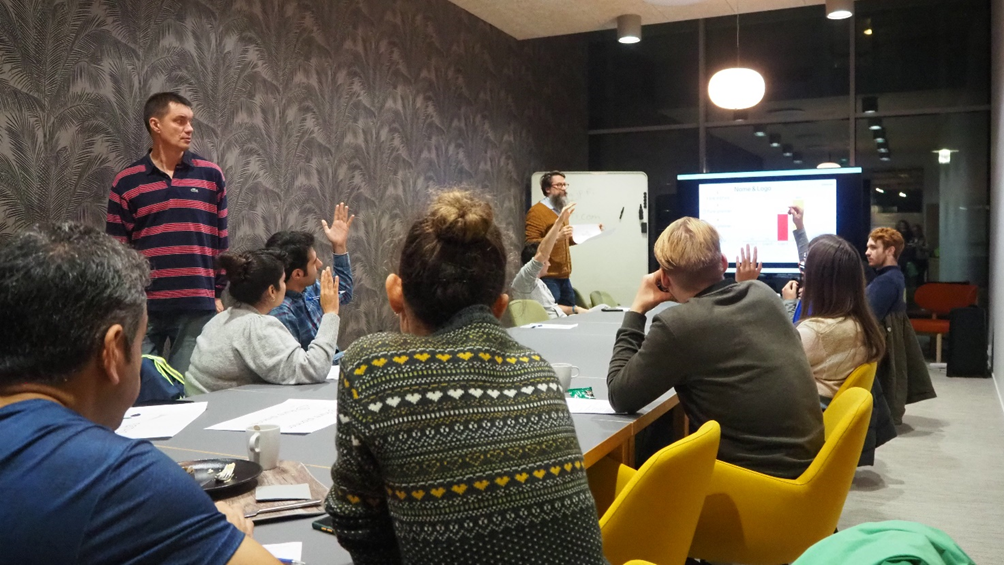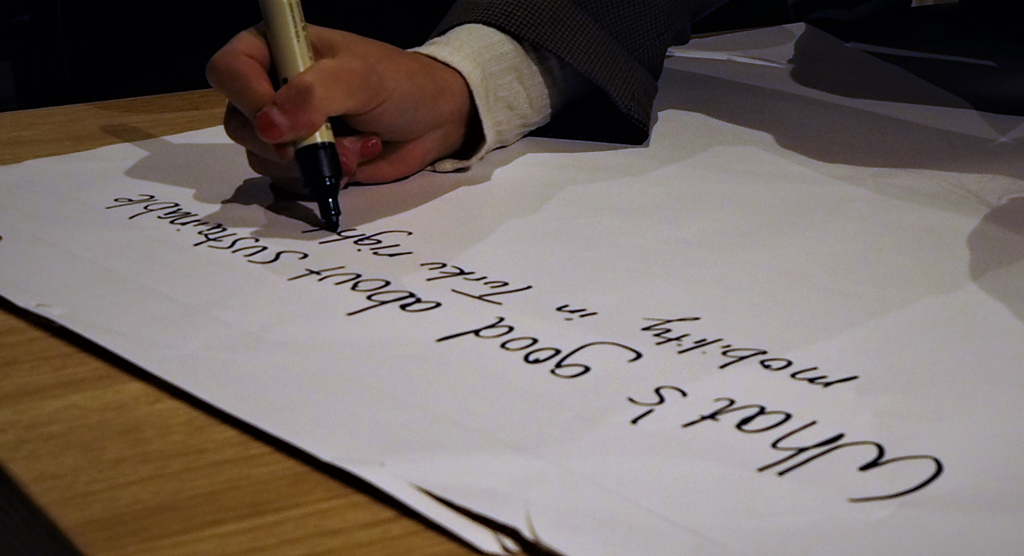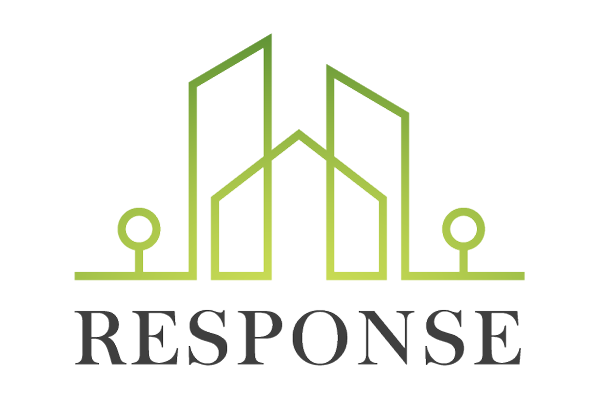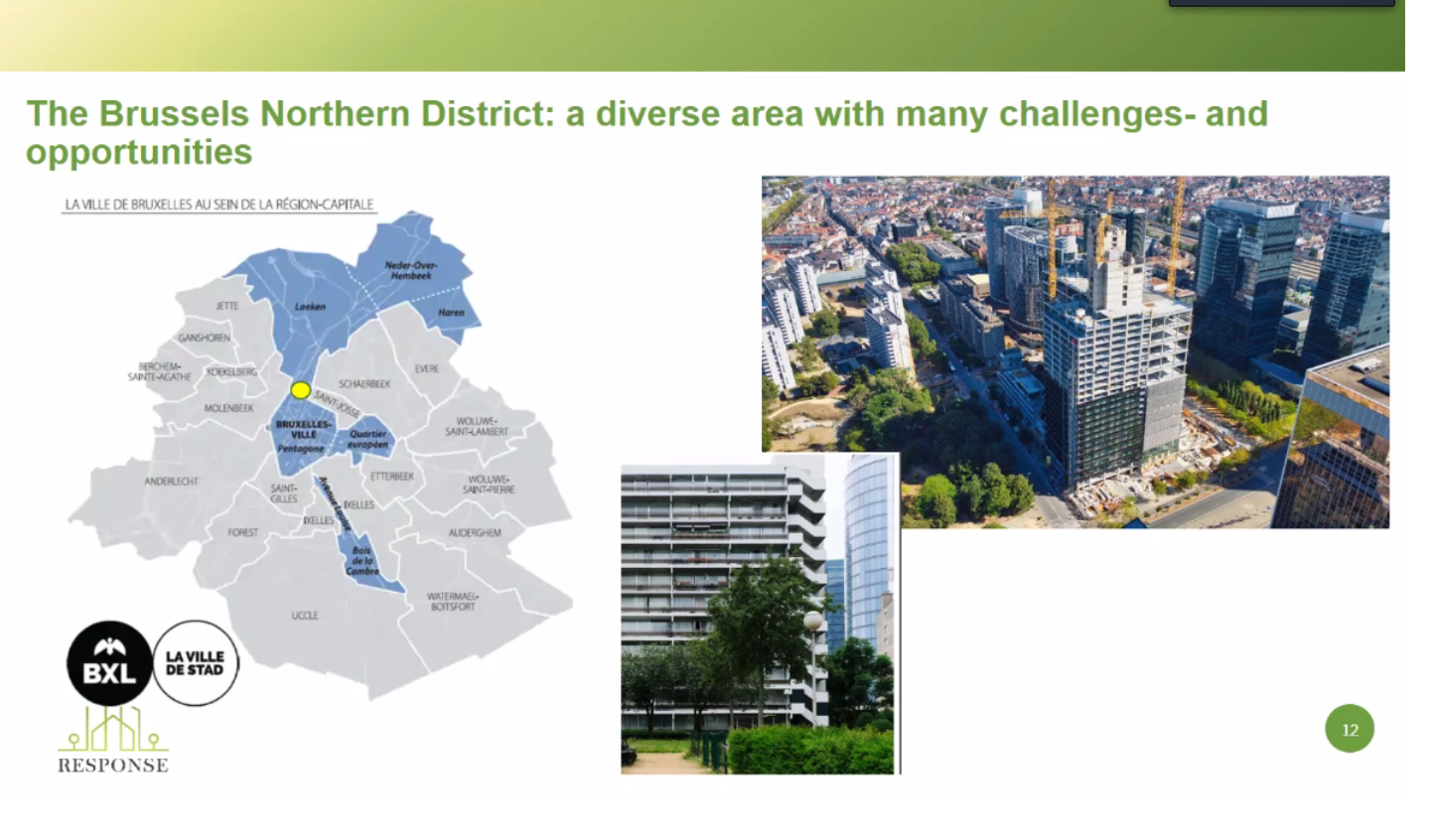The 2nd Environmental workshop organized by the Citizen engagement work package in Turku brought together the PED residents and RESPONSE partners at the student village on the 27th of October. In the event, the participants were engaged to help develop e-mobility issues in the PED and the Air quality journey planner together with the RESPONSE partners from Turku UAS, the City of Turku, Finnish meteorological institute and University of Turku.
The workshop participants were given the opportunity to test electric bikes and an electric cargo bike. The bikes were provided for testing by local bike provider Onnipyörä Turku. Many of the participants had not tried electric bikes before and were surprised how easy it was to ride and how lightweight the riding felt. However, they noticed also potential issues, as it is easy to drive very fast with the bikes and especially the e-cargo bike needs a lot of space to turn. These and many other topics were discussed during the workshop.

The participants made a trip together, using the Air quality journey planner application. The trip was made by foot and bike, using also the shared city bikes, Fölläri. The user can choose their route between the best air quality, the greenest and least hilly route on the journey planner. The trip was made by using the greenest route and the participants enjoyed beautiful riverside views despite the light rain.
The journey planner was further developed in one of the workshops. During the workshop, the visual appearance of the application was decided, and the participants could give feedback on the app under development. More information about the conditions on the route was desired, such as slipperiness, temperature and windiness, as well as the duration of the chosen route. Information on traffic obstructions, such as construction sites or re-routing of cycleways was also desired. The duration of the chosen route and the user’s location were also seen as important additions. Overall, the journey planner got good feedback and the routes suggested by the app were found to be useful.

On the other workshop, sustainable mobility issues in the Student village PED area were discussed. The participants were asked to think about practicalities regarding mobility in the area, ie. what works well and what doesn’t. After a short discussion, the participants were asked to imagine an ideal future in terms of sustainable mobility. A lively discussion followed, after which the participants were introduced to ways to advocate mobility related initiatives in the city of Turku.
Altogether 30 students and PED residents took part in the workshop. The atmosphere on the event was relaxed and the participants enjoyed the discussion about sustainable mobility and air quality – as well as the vegan hot dog buffet that was served.

Text: Heidi Heikkilä, Annika Kunnasvirta, Katariina Kiviluoto / Pictures: Heidi Heikkilä

















